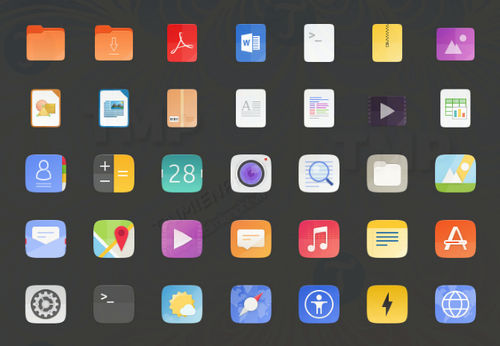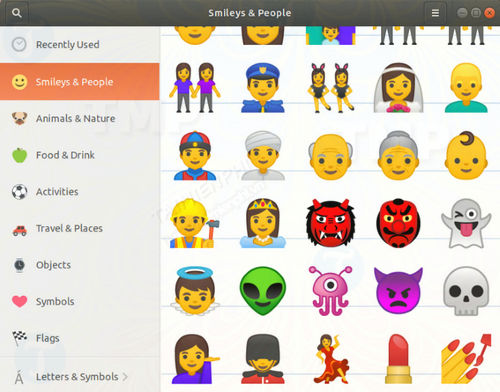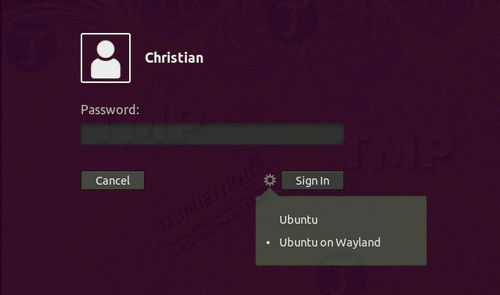What's new in Ubuntu 18.04? Should update
To find the answer to the question What's new in Ubuntu 18.04? Should I update or not? Readers can refer to the content in TipsMake's article below.
Ubuntu 18.04 LTS update
It is expected that the Ubuntu 18.04 update will be released in April 2018. Accordingly, Ubuntu 18.04, codenamed "Bionic Beaver", is an important version for the popular Linux operating system.
Ubuntu LTS versions are released every 2 years, and Ubuntu 18.04 was released first since 2016. Long Term Support releases are supported by Ubuntu developers, Canonical for 5 years. That means Ubuntu 18.04 LTS users will be supported until 2023.
A small note about naming conventions: the reason it is called Ubuntu 18.04 is because the update was released in April 2018. We can hope there are no repeats in the non-LTS update released later this year, also known as Ubuntu 18.10. Every year, exactly every 6 months, Ubuntu updates are released in April and October.
So what's new in Ubuntu 18.04? Should I update Ubuntu 18.04 or not?
Here are some reasons to update Ubuntu 18.04:
1. Security improvements
First of all, Ubuntu updates include the latest bug fixes and security patches, it can be operating system patches, drivers or even the underlying hardware (in case of security bugs). Meltdown and Specter).
The updates here are true for all operating systems, whether Linux, Windows or macOS. Update regularly to improve your device's security. That's why Windows XP users are recommended to upgrade to new versions or switch to Linux.
However, there is a potential security concern that you should be aware of. With Ubuntu 18.04 LTS, Canonical plans to collect data from user computers. However, there is nothing that can identify this personal data. Instead, users need to set up their computer's hardware, the version of Ubuntu they are running, their location (based on the user's choice when setting up Ubuntu), and a few other options.
Importantly, users can choose whether or not to participate in data collection. If you upgrade from a previous version of Ubuntu, you can also opt-in.
2. GNOME added in LTS release
The most interesting information in the LTS release is probably GNOME 3.28. Since replacing Unity in Ubuntu 17.10 (although Unity is not completely dead) GNOME became the default desktop environment on Ubuntu.
Of course, it's not just GNOME. Several other Ubuntu desktop environments are available such as MATE.

GNOME on Ubuntu 18.04 LTS marks the first appearance of customized GNOME 3.0 on a long-term support release. And that's a great reason to upgrade to Ubuntu 18.04.
3. New icon set
The open source Suru icon project is integrated in Ubuntu 18.04. These icons were originally added in the abandoned Ubuntu Touch mobile operating system (currently managed by UBPorts.com).

On the Suru site, the native mobile app icon has been reoriented to create a GNOME theme. File and folder type icons have been added, based on unreleased Suru icons. An additional complete icon set was created, with many icons based on Suru's original system icons.
4. Colorful emoticons
Black and white are the two main colors for emojis on Ubuntu. And this is also a limitation of this distribution. However, starting from Ubuntu 18.04 LTS, new colorful emoticons have been added. So upgrade your computer to Ubuntu 18.04 LTS to experience the new set of colorful emojis.

The emojis you find in Ubuntu 18.04 LTS are open source emojis like those found on Android.
5. New Linux Kernel
Kernel is considered the heart of Linux-based operating systems. Basically, Kernel is the hardware component of the operating system.
Initially Ubuntu 18.04 LTS is expected to be supplemented with Linux Kernel v4.14. However, it is likely that Ubuntu 18.04 LTS will be supplemented with Linux Kernel v4.15, not v4.14.
6. Community-sourced default features and apps
In addition to the above features, Ubuntu 18.04 LTS also adds a set of community-sourced features and applications. Announced back in April 2017, after a call it contributed to improved support for NVIDIA GPUs, support for touchpad gestures, and implementation of BlueZ to improve Bluetooth functionality.
Not only that, applications are also recommended with some obvious choices like Mozilla Firefox and LibreOffice, Kdenlive and GNOME Calendar also listed.
However, these tools will not be available in the operating system by default. Instead, users will have the option to install these applications when they install Ubuntu.
7. Use Xorg display server
Ubuntu has been going through a difficult time, with the withdrawal of its mobile variants and the end of Unity. One of the biggest milestones for this operating system was the move to the Wayland display server in Ubuntu 17.10.

While Waylan is expected to be the display server of the future, the lack of application support for Wayland forces users to fall back to using Xorg.
As a result, Xorg is restored in Ubuntu 18.04 LTS, and is used as the default display server. However, if users want, they can switch back to the Wayland display screen by using the cog icon on the login screen.
If you are looking for an answer to the question "What's new in Ubuntu 18.04?" Should update. Hopefully after TipsMake's above article, you have found your answer. If you have no experience installing or using Ubuntu, you can install Ubuntu in VMWare , install Ubuntu on a VMware virtual machine to try out this great operating system.
You should read it
- Ubuntu gives PCs and smartphones a flat interface
- How to Dual Boot a Compatible Linux Distro with Windows 8
- What's New in Ubuntu 21.10?
- 7 ways to speed up Ubuntu
- How to Migrate from Windows to Ubuntu
- 10 reasons to choose Ubuntu 12.10 instead of Windows 8
- Why is Ubuntu LTS preferred over regular distros?
- What's new in Ubuntu 18.04 LTS just released?
- How to prolong the life of Ubuntu 18.04 installation with Ubuntu Pro
- Ubuntu 23.10 launches with a new App Center interface and better security
- What is the difference between Ubuntu Desktop and Ubuntu Server?
- Ubuntu 21.04 users need to update the system ASAP






 Ubuntu 21.04 users need to update the system ASAP
Ubuntu 21.04 users need to update the system ASAP Ubuntu is about to have a new logo, starting from 22.04 LTS update
Ubuntu is about to have a new logo, starting from 22.04 LTS update How to fix Ubuntu update errors
How to fix Ubuntu update errors What's New in Ubuntu 21.10?
What's New in Ubuntu 21.10? Ubuntu 22.10 Kinetic Kudu will end support on July 20, users should upgrade now
Ubuntu 22.10 Kinetic Kudu will end support on July 20, users should upgrade now How to Update Desktop MATE 1.26 on Ubuntu 21.04
How to Update Desktop MATE 1.26 on Ubuntu 21.04